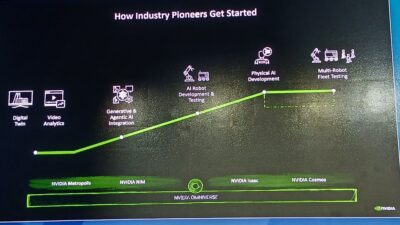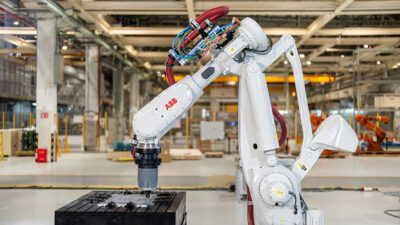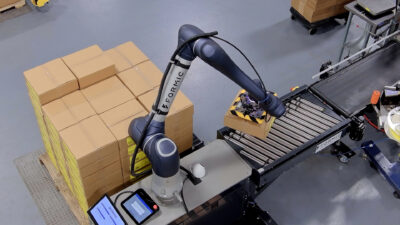Collaborative robots are growing in many industries and are being increasingly used in applications including, pick and place, packaging and quality inspection.

In recent years, demand for collaborative robots has increased across a wide range of industries. Designers, manufacturers, and integrators have helped production and research facilities to find new applications for collaborative robots to work with humans on several different tasks.
Safety features inherent to collaborative robots, such as force feedback and collision detection, allow humans to work right alongside collaborative robots in the same workcell. Collaborative robots are helping to improve worker safety, job satisfaction, and efficiency in many different areas of the facility.
Pick and place: Manual pick-and-place jobs require a lot of repetition, which workers often find to be mundane. When people have to perform dull, routine jobs, mistakes often result, and repetitive motions can inflict workers with strains and injuries. When combined with advanced vision systems, collaborative robots can perform pick and place tasks more efficiently, allowing humans to focus on the parts of their job that require critical thinking.
Packaging and palletizing: Products that leave the assembly line must be prepared for shipping. To keep the production line moving, products must be moved to the shipping floor as quickly as possible. Some tasks involved in the process include shrink-wrapping, boxing, and placing products on a pallet, tasks often viewed as very repetitive and tedious for workers. Collaborative robots also are good candidates for performing heavy lifting tasks, relieving humans of potentially dangerous work.
Quality inspection: Businesses and consumers demand that products are shipped without factory defects, but inspection is sometimes tiresome for workers. Potential mental fatigue can cause inspectors to miss problems, but collaborative robots can inspect finished parts by comparing images against computer-aided design (CAD) models. Multiple high-resolution cameras can capture all angles of a part simultaneously for even faster results, and end effectors equipped with high-resolution cameras further increase efficiency.
Additional industries benefit from collaborative robot applications
Collaborative robots aren’t just part of production facilities. They’ve found their way into other unique applications. One type of collaborative robot is able to help greenhouse workers pick plants. These collaborative robots help relieve seasonal labor shortages by handling seedlings, herbs and other plants.
Collaborative robots have even found their way into restaurants. Some collaborative robots have been designed to flip burgers, and also help the kitchen to comply with OSHA and food safety standards. These collaborative robots can also run for up to 100,000 hours straight, assisting restaurants with labor shortages and the challenge of keeping costs low.
This article originally appeared on the Robotics Online Blog. Robotic Industries Association (RIA) is a part of the Association for Advancing Automation (A3), a CFE Media content partner.



